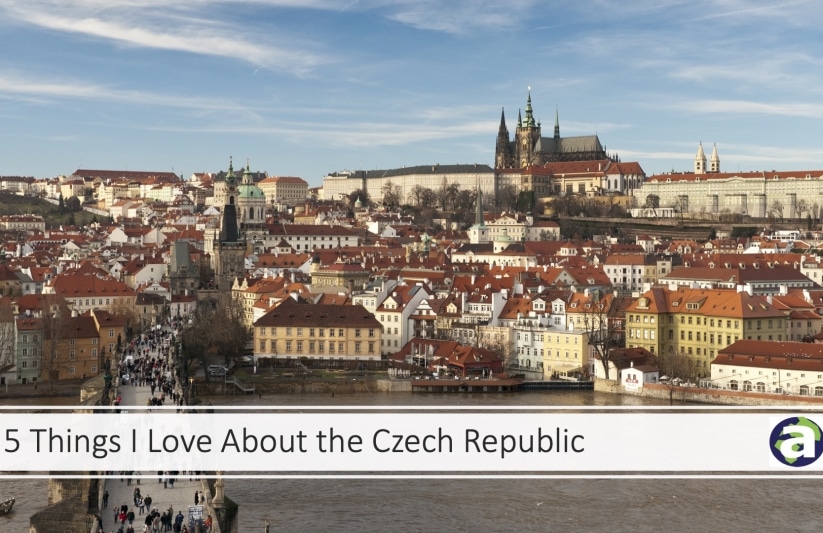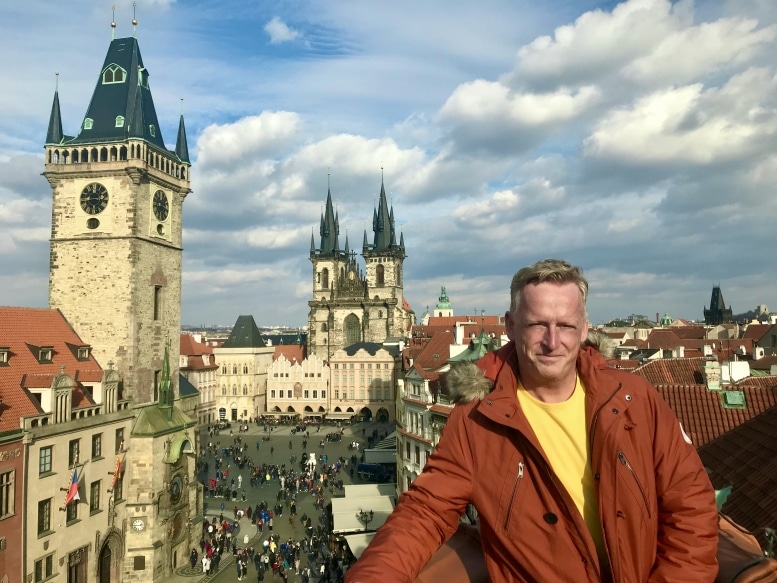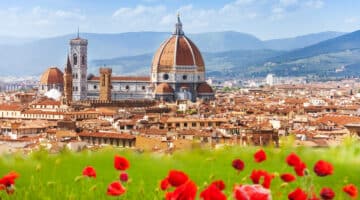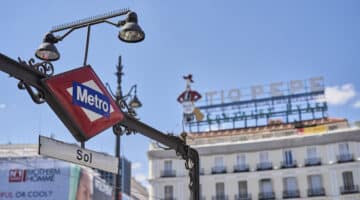What is the Czech Republic Known For? 5 Things We Love About the Czech Republic

Last night one of ACIS’ most coveted Tour Managers, Peter Ede, hosted the latest event in our Destination Connect series with “5 Things I Love About the Czech Republic.” An often overlooked destination, Peter explored the amazing sights, sounds, and people that make the Czech Republic (also known as Czechia) such an incredible place.
The Czech Republic has the largest density of castles in all of Europe, low prices compared to other major European countries, and spectacular scenery, but that doesn’t tell the whole story of why the Czech Republic deserves to be explored. Although narrowing down a list to just five subjects is nearly impossible, Peter explains why this is one of his favorite countries to visit.
1. The Built and Natural Environment

Nestled in the heart of Central Europe, the Czech Republic is a beautiful country with a number of well-preserved historic cities and castles. It’s gorgeous capital city, Prague, dates back 1,100 years and has preserved the structure of its development until present times. Prague is stunningly beautiful and carries superlatives in ways that very few cities do. However, there are several smaller cities that are often featured on ACIS tours to the Czech Republic including Český Krumlov, Macocha Abyss, Kutná Hora, and Telč.
Český Krumlov is a fairytale town with astonishing cobbled streets, a sprawling forest, fabled legends about vampires, and the second largest castle in Central Europe (which features a beautiful renaissance tower). While bigger cities like Prague can attract students to sign up, smaller towns like Český Krumlov are easy to navigate and often end up as the highlight of the trip.
2. Recent History: Peeling Onions

In the Czech Republic, you can literally reach out and touch the history. In a way, you can peel back the layers as you discover the past and present. Following the collapse of the Austro-Hungarian Empire in World War I, the state of Czechoslovakia was born. In 1938, the German occupation of Czechoslovakia began with the German annexation of Sudetenland and, shortly thereafter, the second World War began.
The Czechs had one of the longest occupations of any country under the Nazis, lasting from 1938 to 1945. This led to many tragic events including the establishment of concentration camps like Theresienstadt Ghetto, which is located an hour outside of Prague. While visiting Theresienstadt is an emotionally taxing experience, it’s an essential stop on your tour. Issues like intolerance, racism, fascism, and genocide don’t start here. They end here. Students don’t just learn about history with their visit, they also establish a better understanding of our present and future.
Additionally, students not only learn about communism, but they can actually see it. While in Prague, you can visit the communist Bloc towers; a series of sprawling high rise apartments constructed during the Cold War. This isn’t something abstract, it’s something that you can touch and feel. There are so many remarkable buildings and poignant monuments to the past, but being able to see the history of a country through their architecture is a truly unforgettable experience.
3. Cars

You might think that Czech cars sounds like a boring subject, but it’s actually quite interesting. Back in 1895, a young Czech man had an issue with his bicycle, so he decided to write the manufacturer. After rudely being denied service, he decided to start his own bike manufacturer alongside one of his friends. That business, Laurin & Klement, evolved from bicycles to motorbikes to cars before being acquired by Skoda Auto.
Known for their sleek appearance and high quality, Skoda rapidly became the largest automotive manufacturer in the Austrian Empire. In fact, you can still take chauffeur driven tours around Prague in the original Skoda cars from the 1920’s.
Under communism, Skoda became nationalized, and the quality dropped off precipitously. At one time, these cars were one of the cheapest cars in all of Europe because the communists were so desperate to get their hands on western currency.
After the fall of communism, Skoda became privatized and was eventually acquired by the Volkswagen Group in 1994. Since that time, Skoda has re-established their reputation for quality craftsmanship while the GDP of the Czech Republic has increased from $2,800/person to $37,000/person. This story is fantastic because it encapsulates the history of the Czech Republic through cars.
The Zaniness of the Czech people and their unique sense of humor

With the caveat that you should never generalize about 10 million people, there’s a lot to love about the Czech people. While they often appear forlorn and downtrodden, they actually have a very unique and wry sense of humor. Czechs can be more reserved, so it’s only fitting that their comedic sensibility is quiet and droll.
That unique sense of humor can be seen in something as banal as their greeting, as they tend to use the popular sailor’s phrase “ahoy” despite being located in a landlocked country. Their off-the-wall humor can also be seen in their architecture and artwork, whether it’s statues of giant babies climbing up a TV tower or the even more peculiar statue depicting two men urinating on an outline of the Czech Republic. Seeing this depicted would be unimaginable in countries like the United States or France, but with their unique sense of humor, the Czechs don’t even blink an eye.
The Czechs may not be an effusive people, but don’t let that turn you off! They are just a quiet people with (arguably) one of the best senses of humor in all of Europe.
5. Food and Drink

You may not immediately associate the Czech Republic with fine dining, but there are so many culinary delights in this wonderful country. Treats like stuffed pork dumplings are hugely popular among both the locals and our touring groups. Their food tends to be wholesome, filling, and quite delicious.
Another thing that groups love are the wonderful desserts known as Trdelník, which you can easily find in the center of Prague. It is made from rolled dough (similar to a donut) which is often wrapped around a stick, grilled, and then topped with a mixture of sugar and walnuts. If you’re really looking to treat yourself, you can also get it stuffed with ice cream!
Not a big meat eater? Not to worry! There are many delicious options for vegetarians in the Czech Republic. Fried cheese is one of their specialties, but you can also find delicious bohemian vegetarian platters which include things like sweet potato cakes, buckwheat, barley, spelt, and yogurt.
For the adults on tour, Czech beer is an absolute delight. Pilsners were created in 1842 by brewer Josef Groll in Plzeň, a city located roughly 50 miles west of Prague. Peter’s favorite brewery, Staropramen, makes a European dark lager called Černý which is smooth, chocolatey, and delicious. It pairs well with Becherovka, one of the national drinks of the Czech Republic. Often drunk as a digestive aid, it’s made with more than twenty types of herbs and spices and smells like Christmas in a bottle.
With so many wonderful things to do, we hope you’re dreaming about your next trip to this fabulous destination!










Staropramen, Seriously ….. hail a taxi and quickly.
Thank you for a wonderful presentation Peter! It was so enjoyable! Armchair travel at its finest!
Thanks for the article! For the vegetarians and vegans – there are wonderful vegan restaurants in Prague! Try Forest Bistro, Moment or Country Life.
Surely you won’t go astray as you travel in Czech. Learning the Czech way will make you travel better.